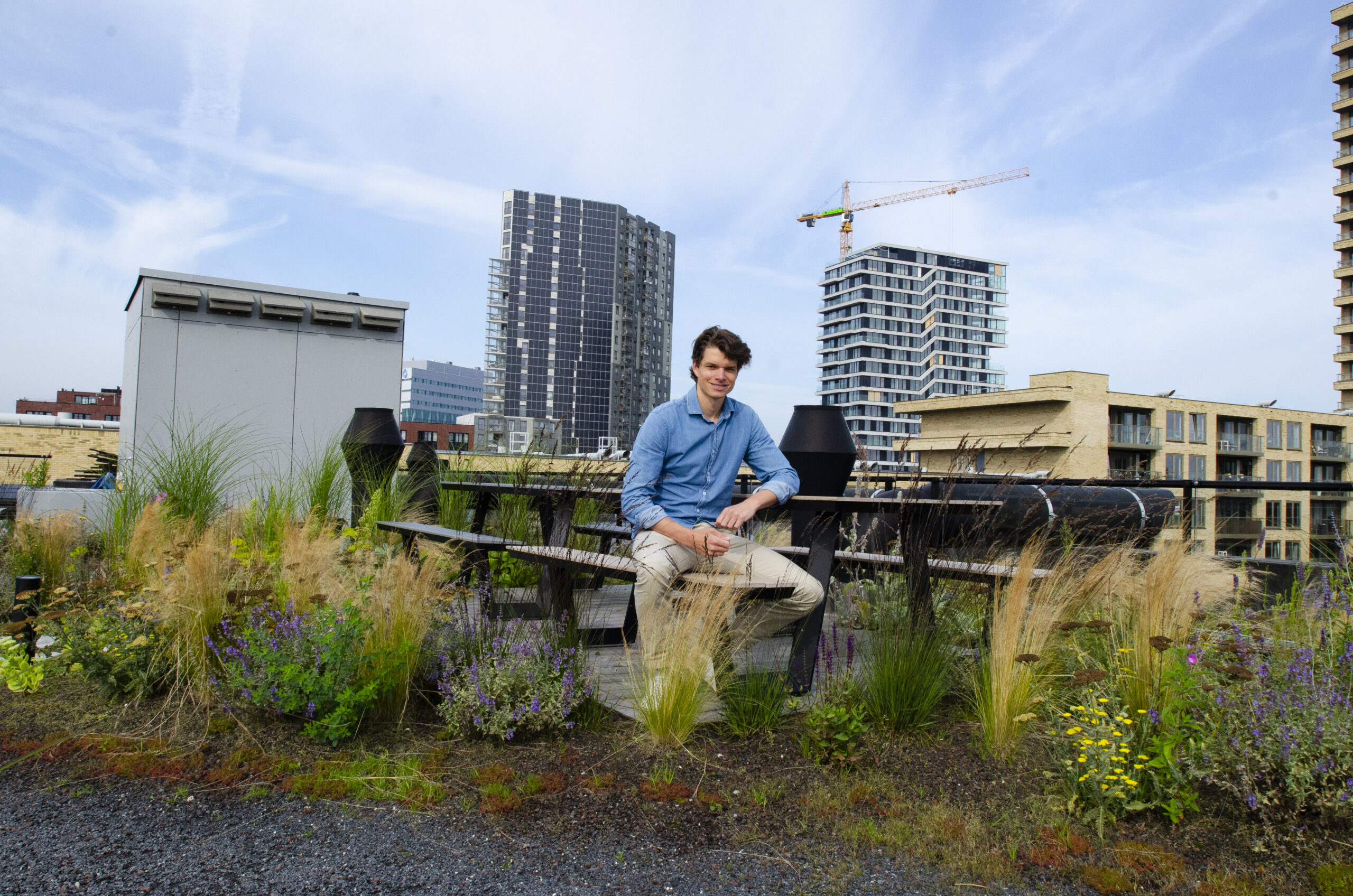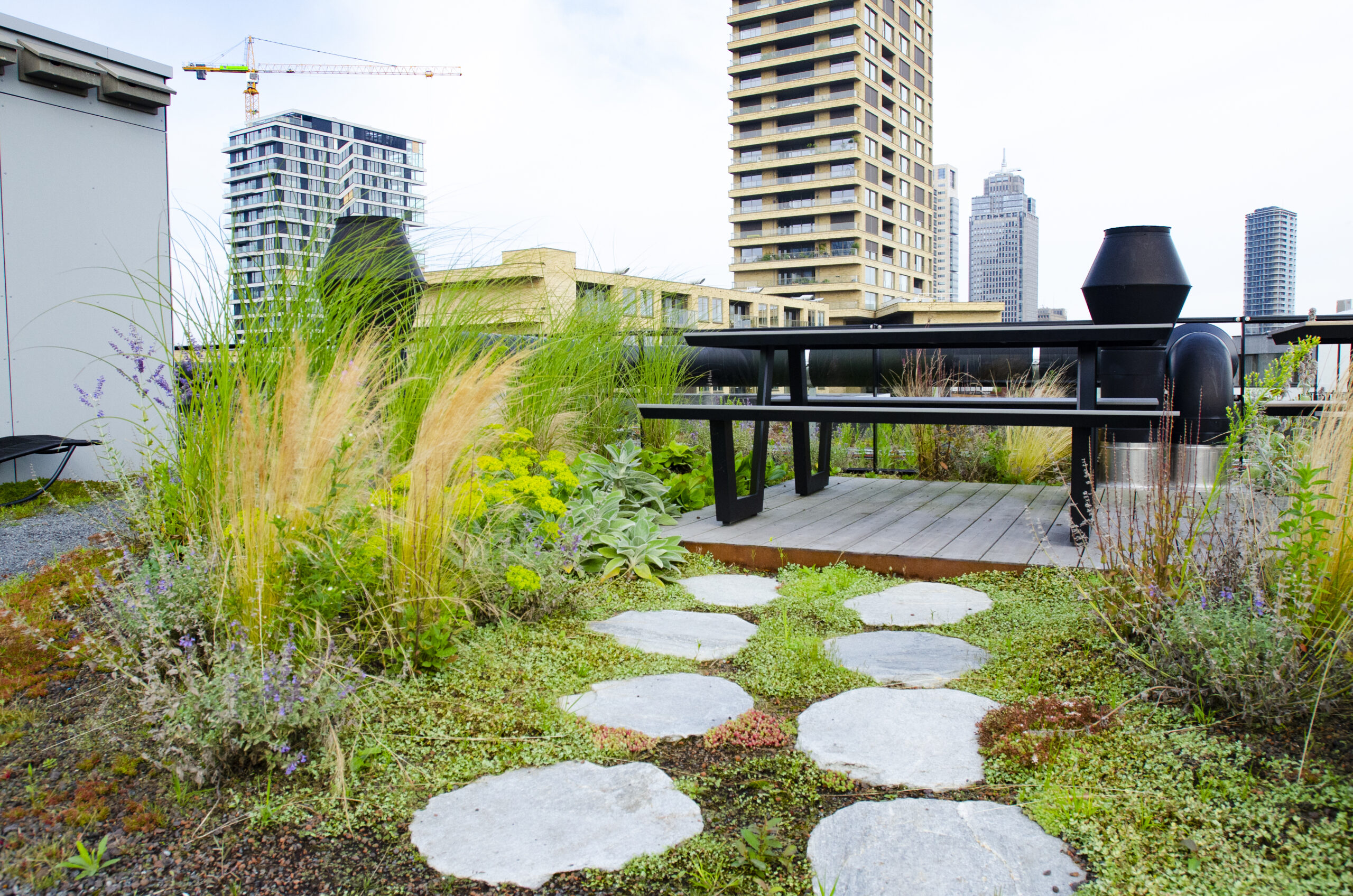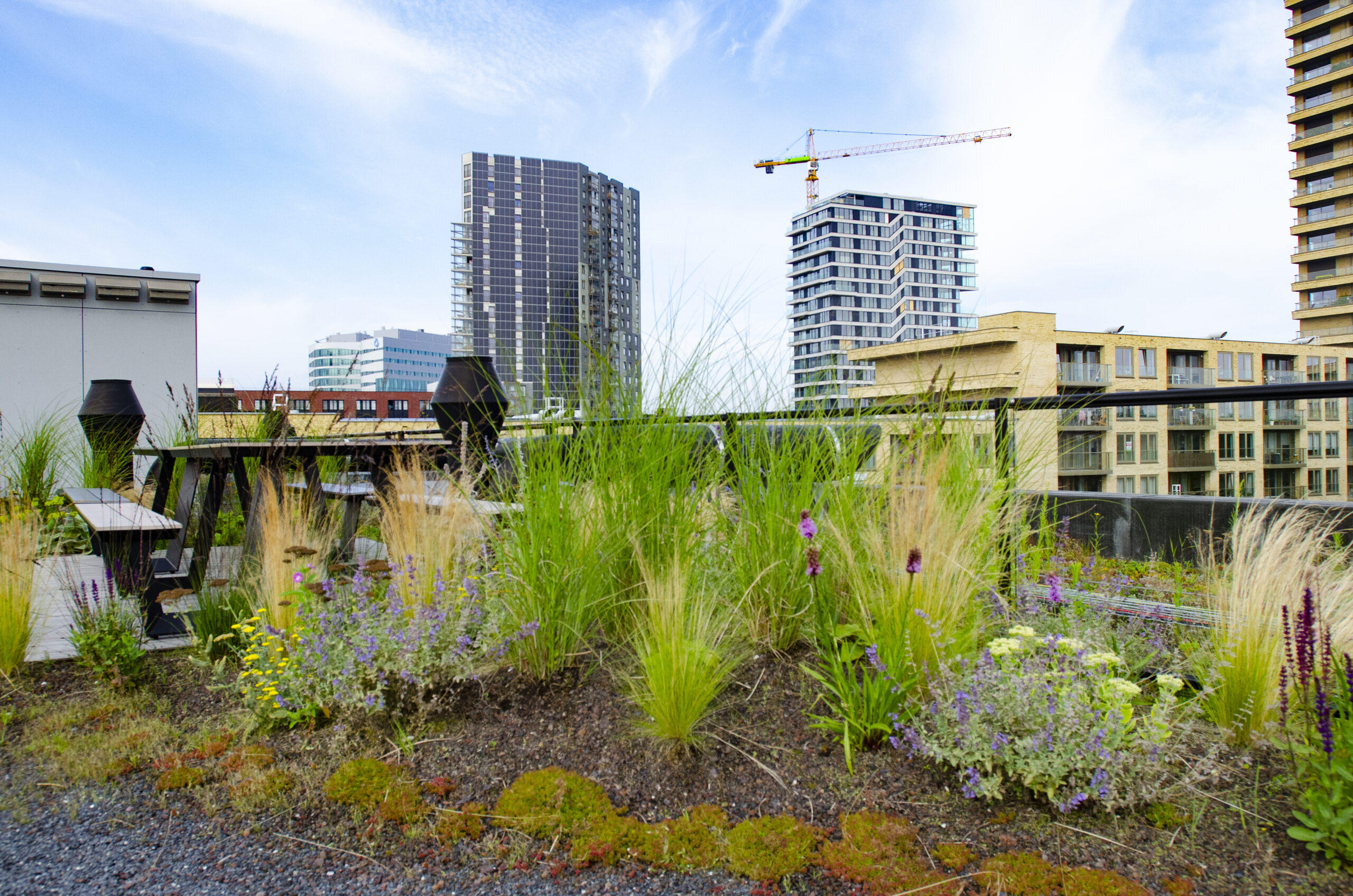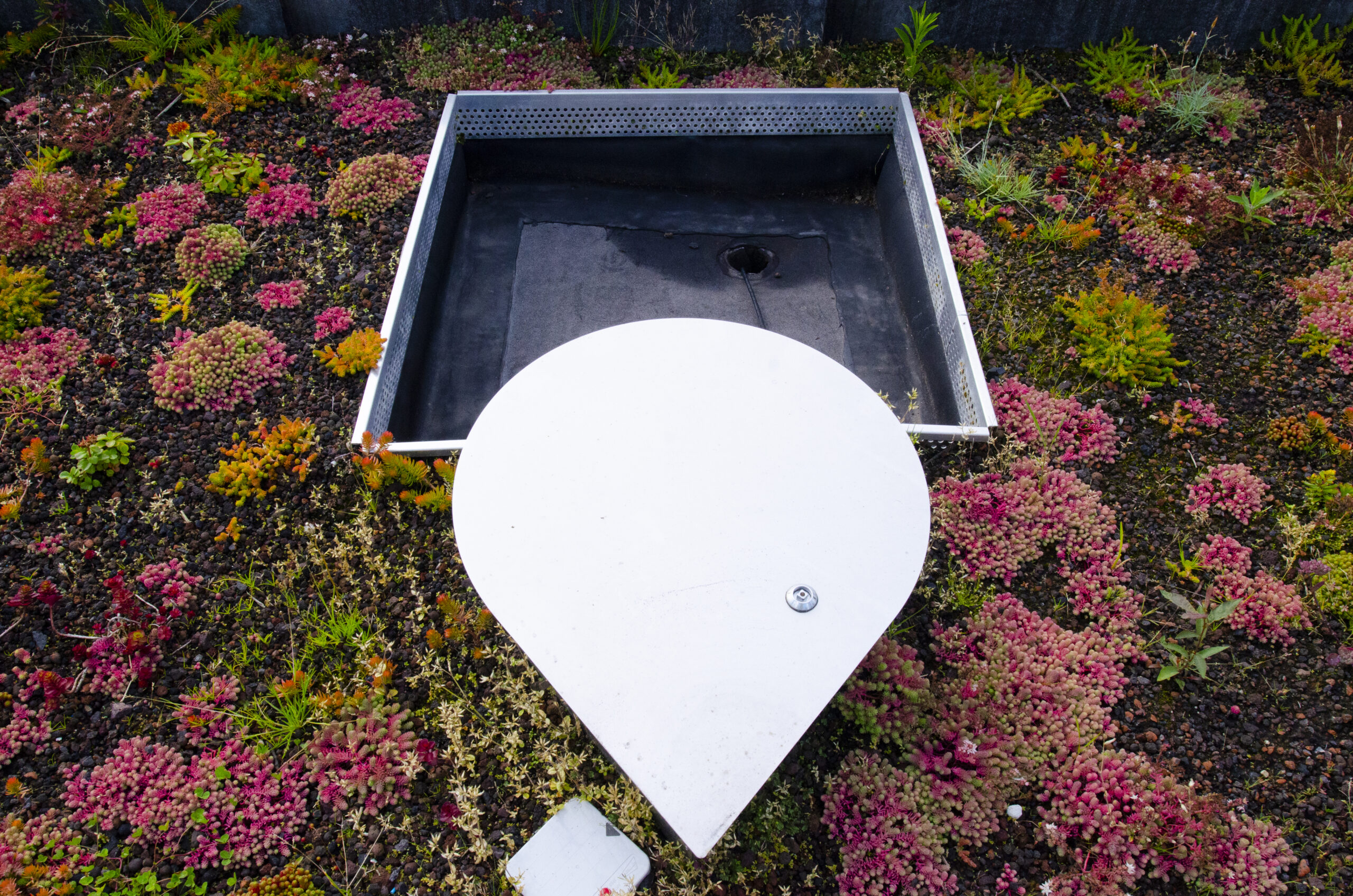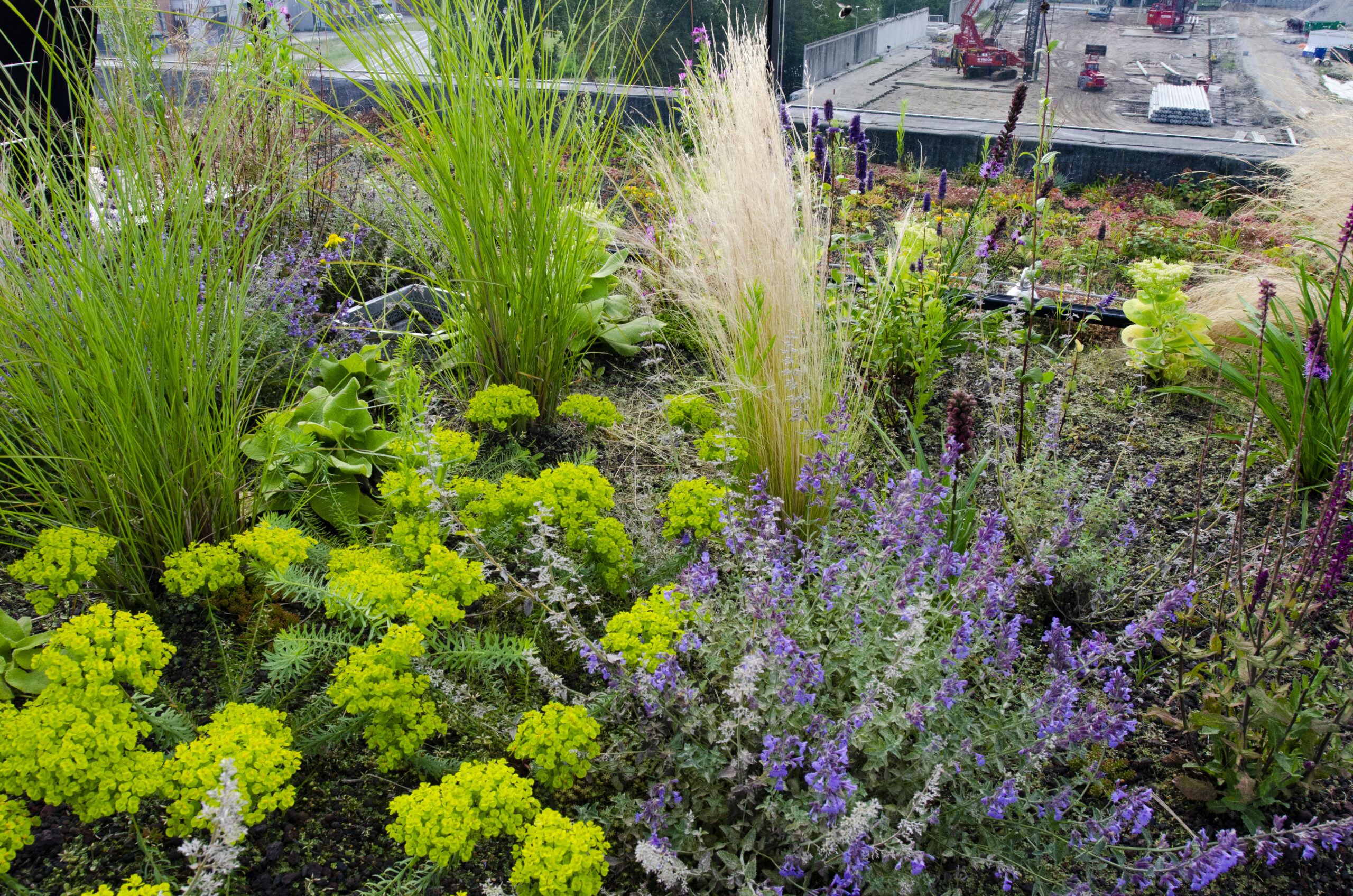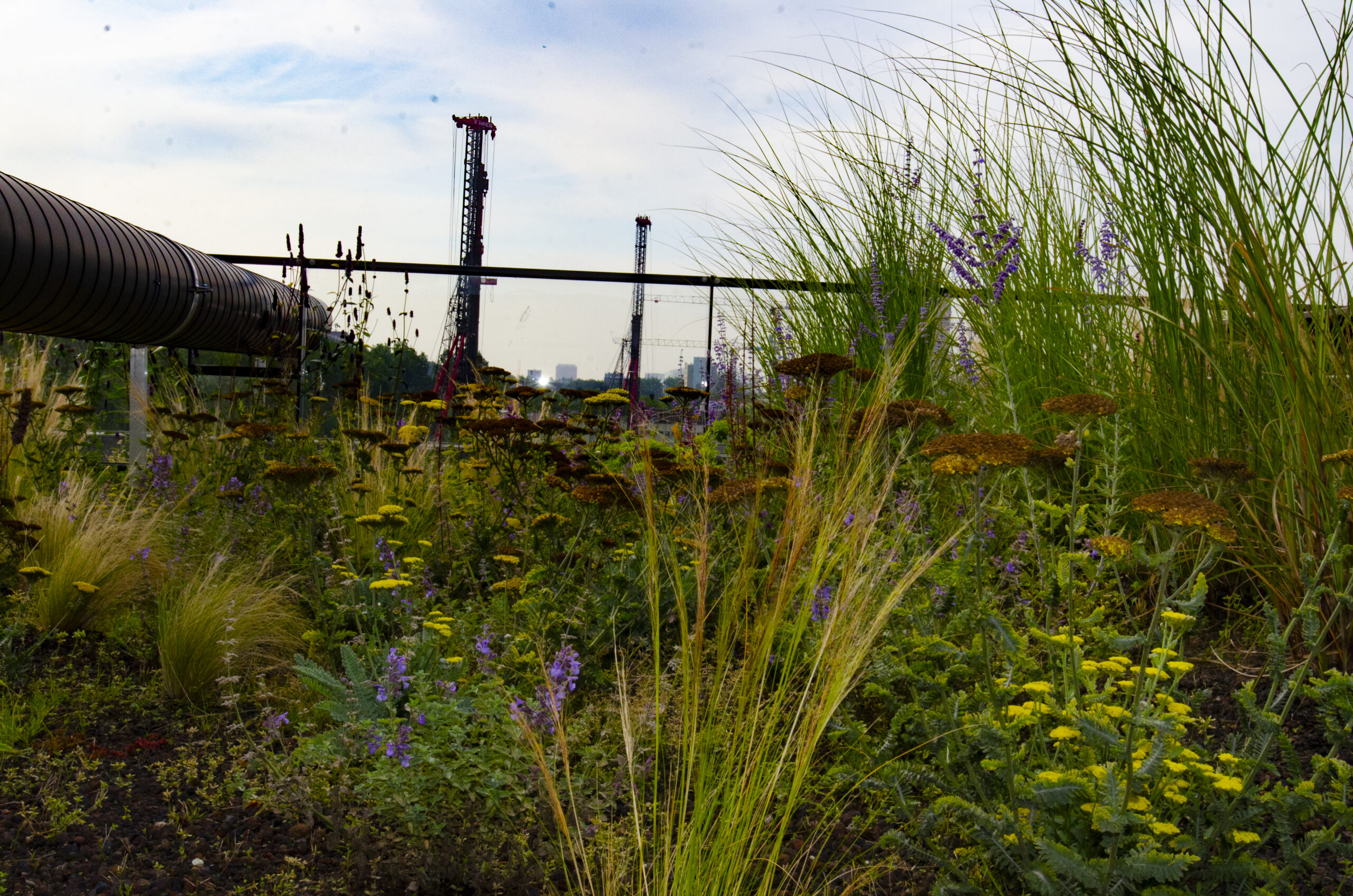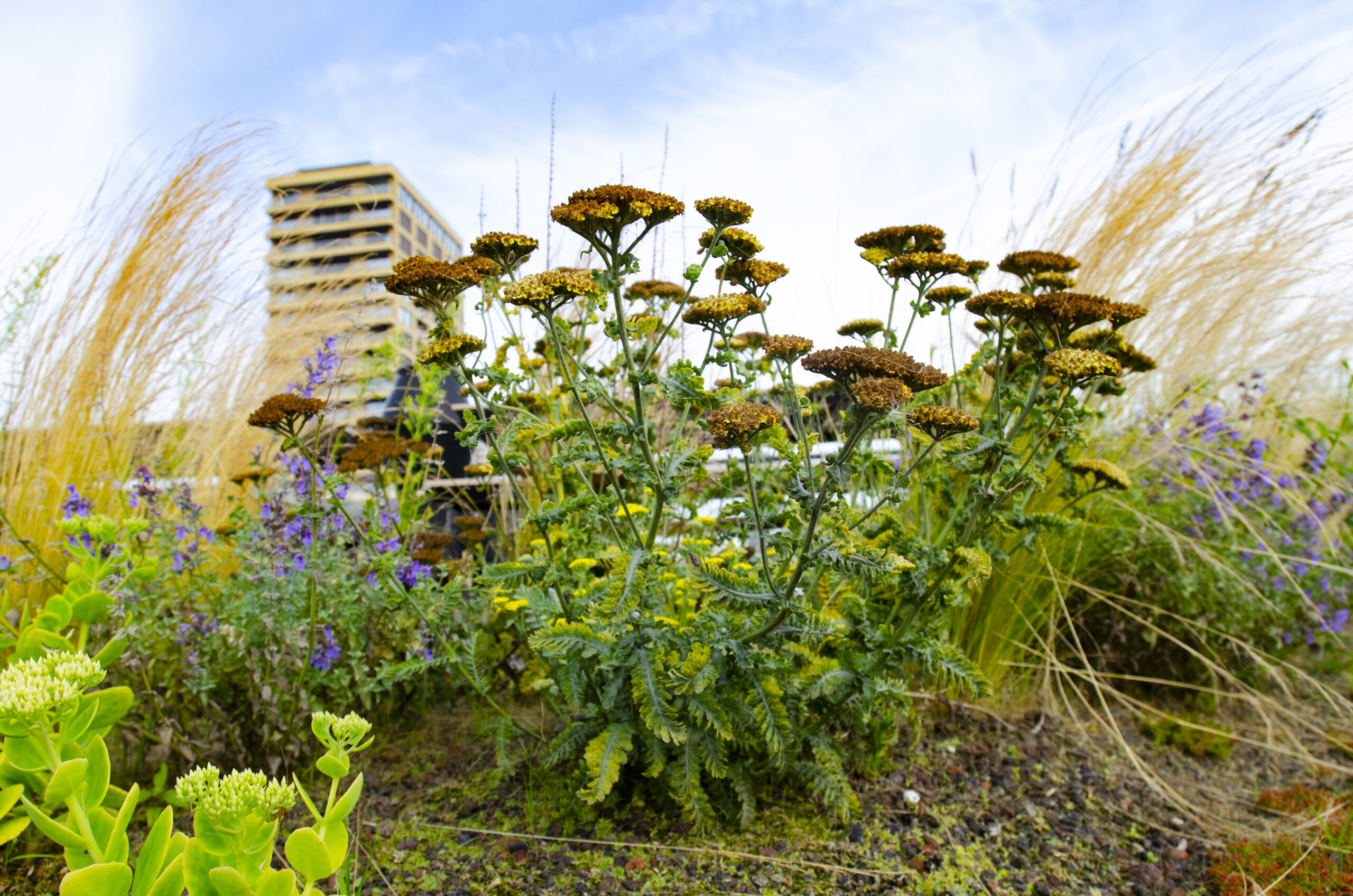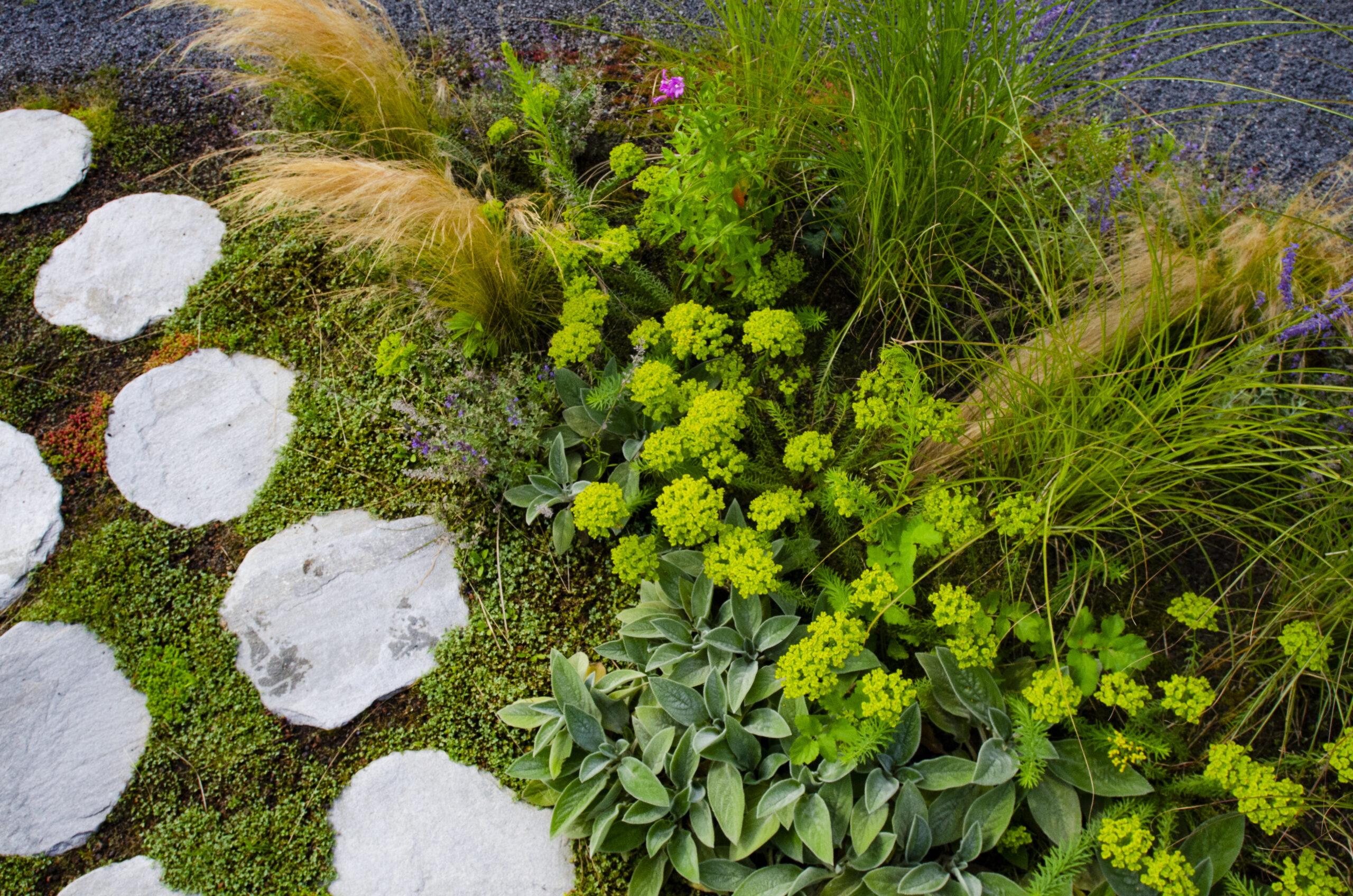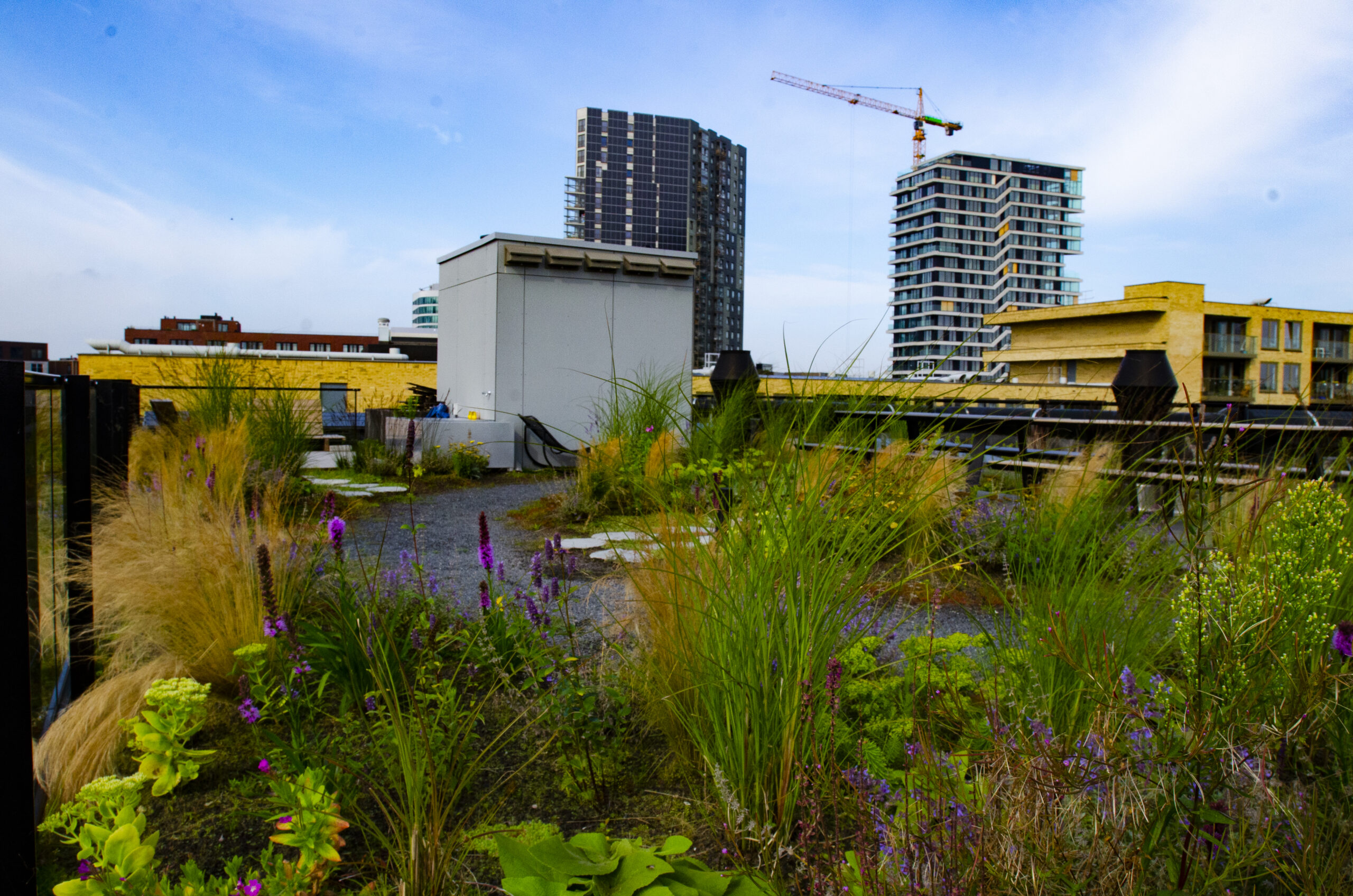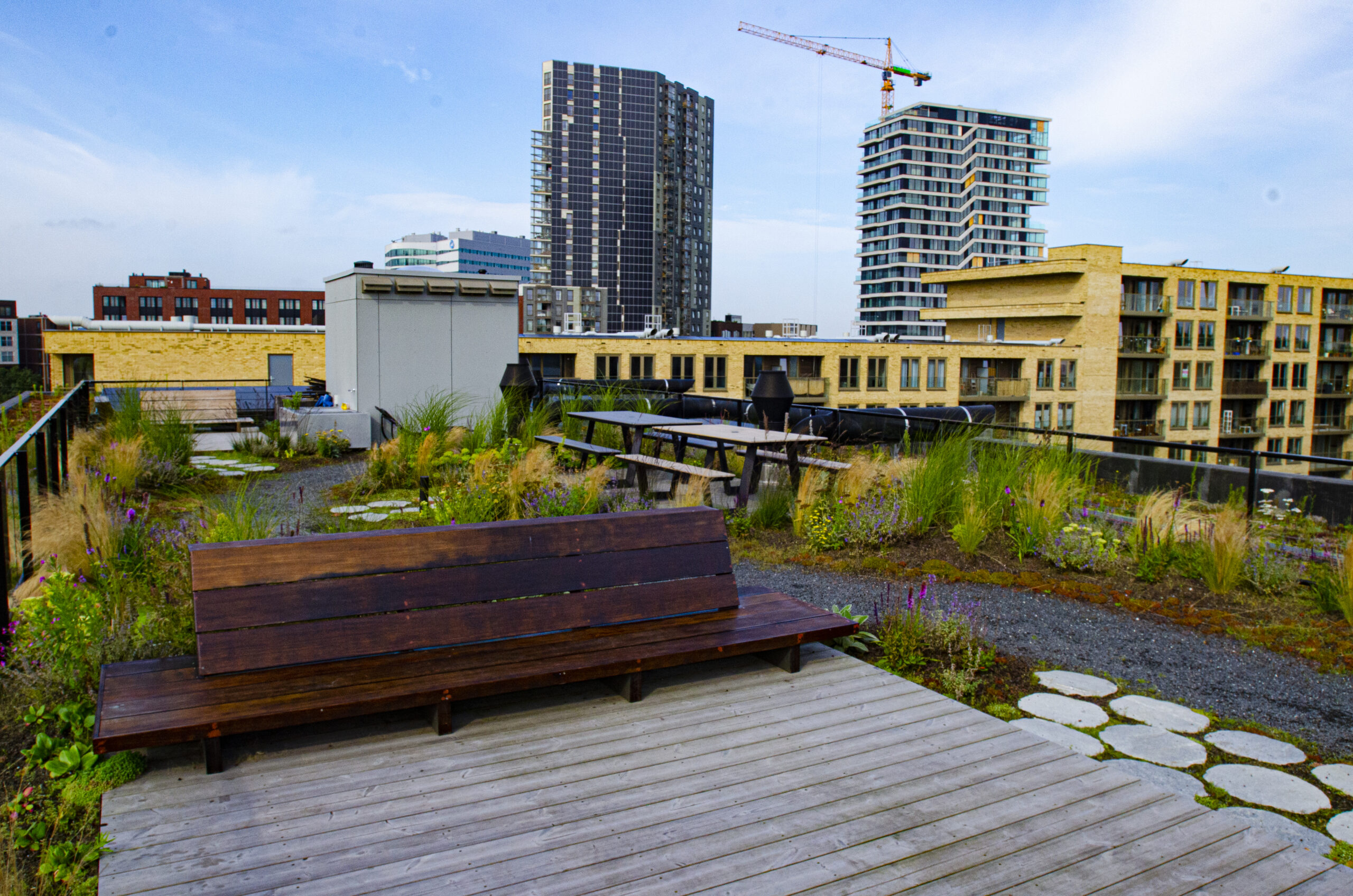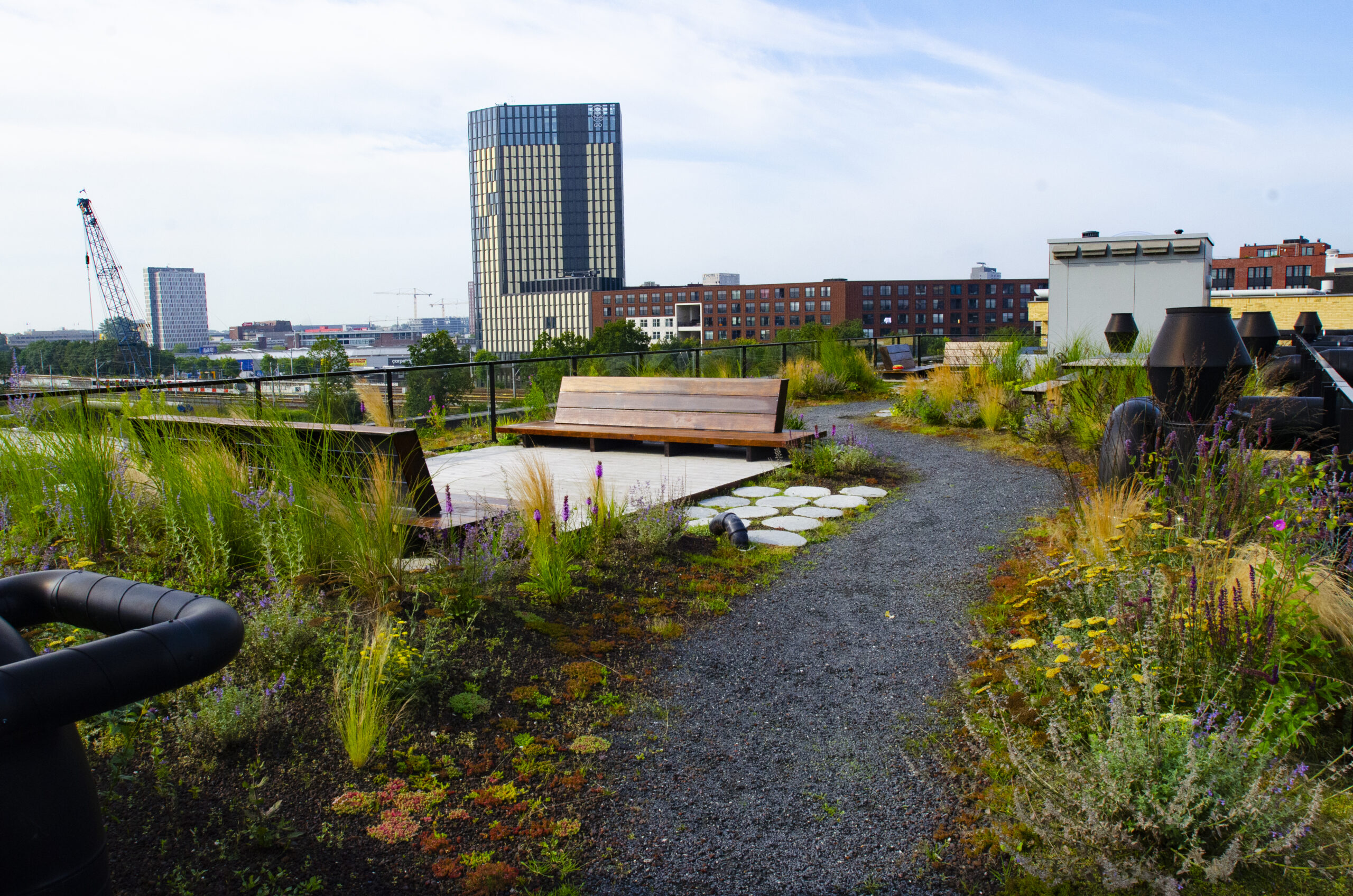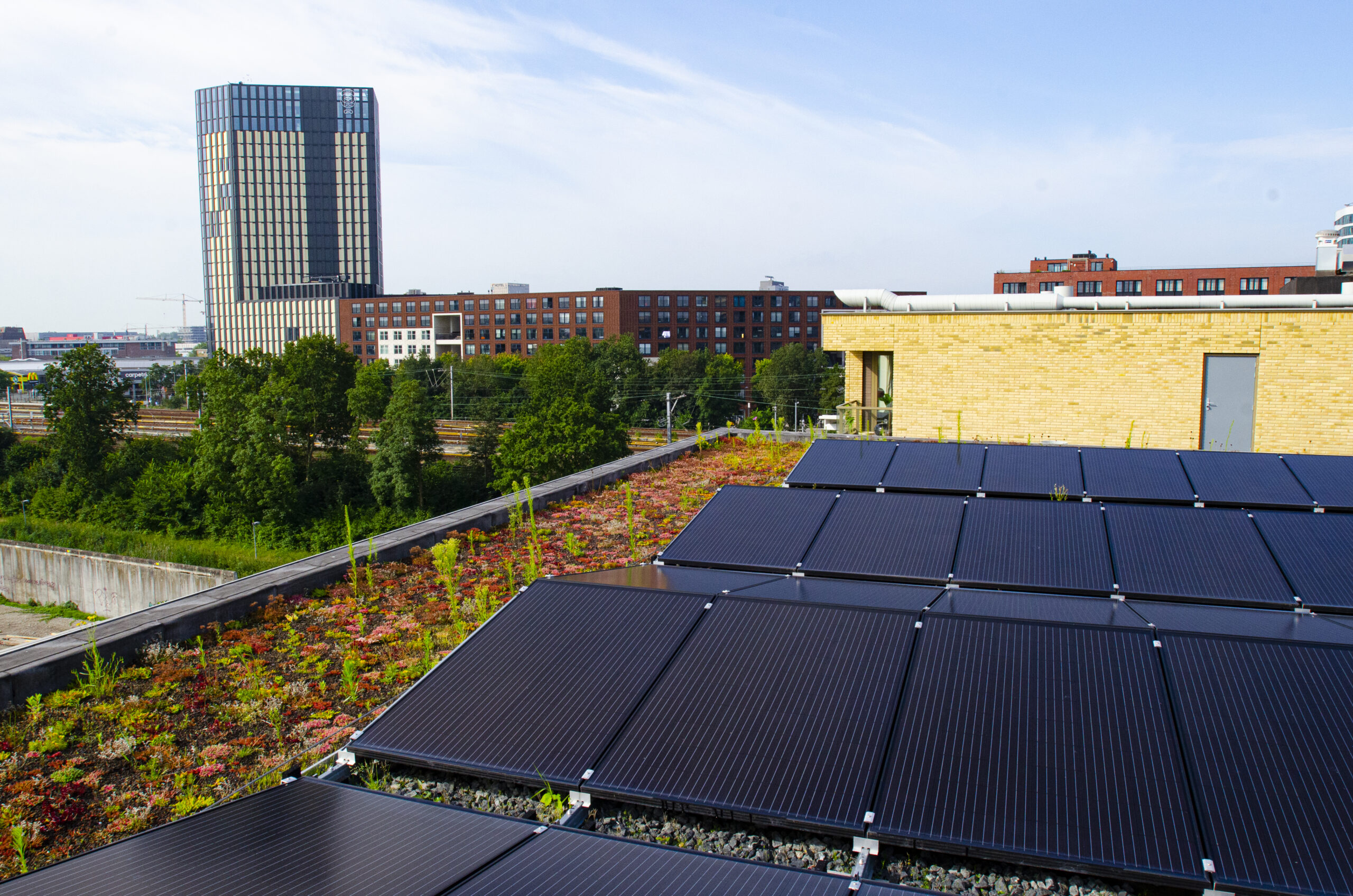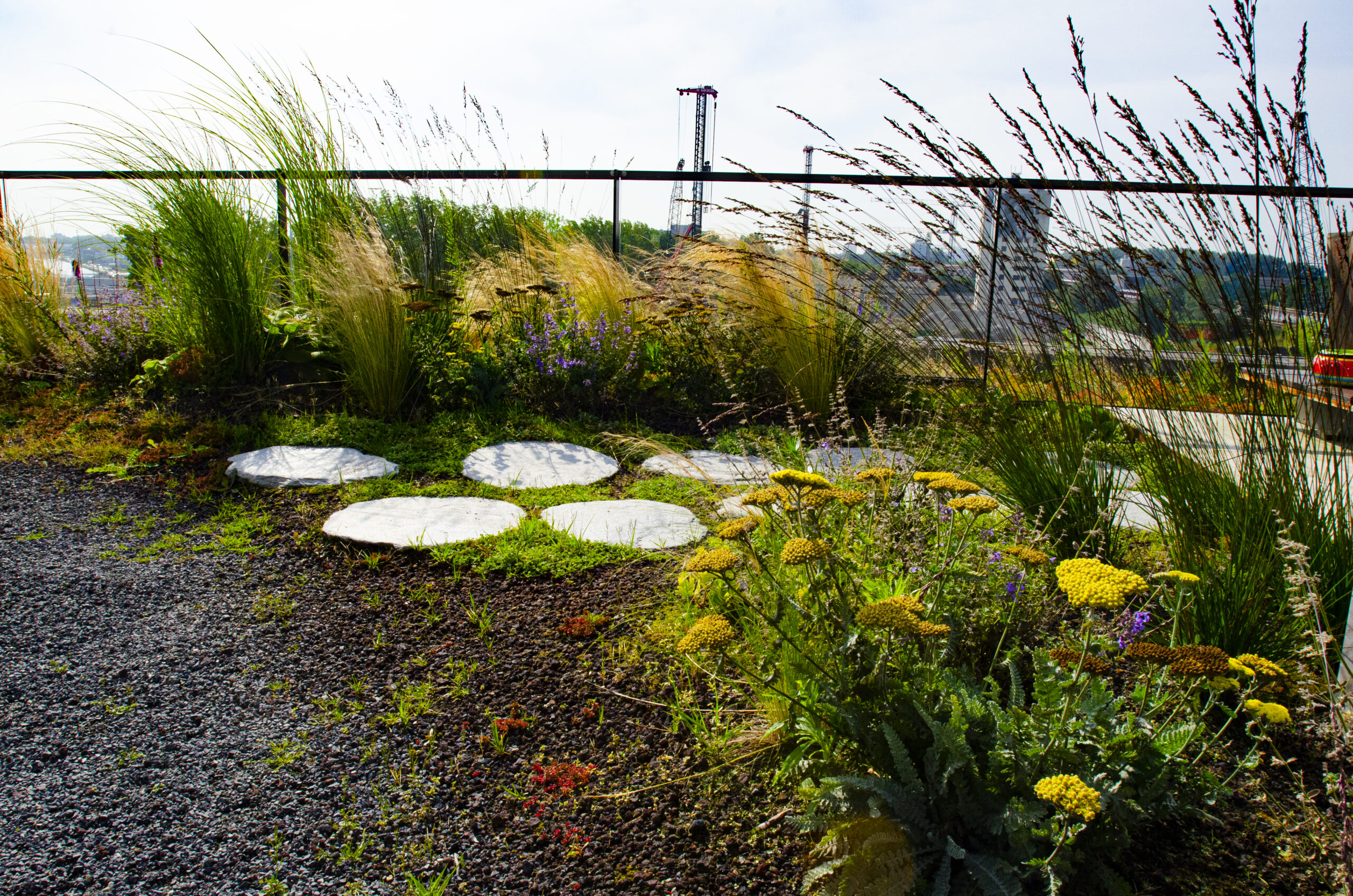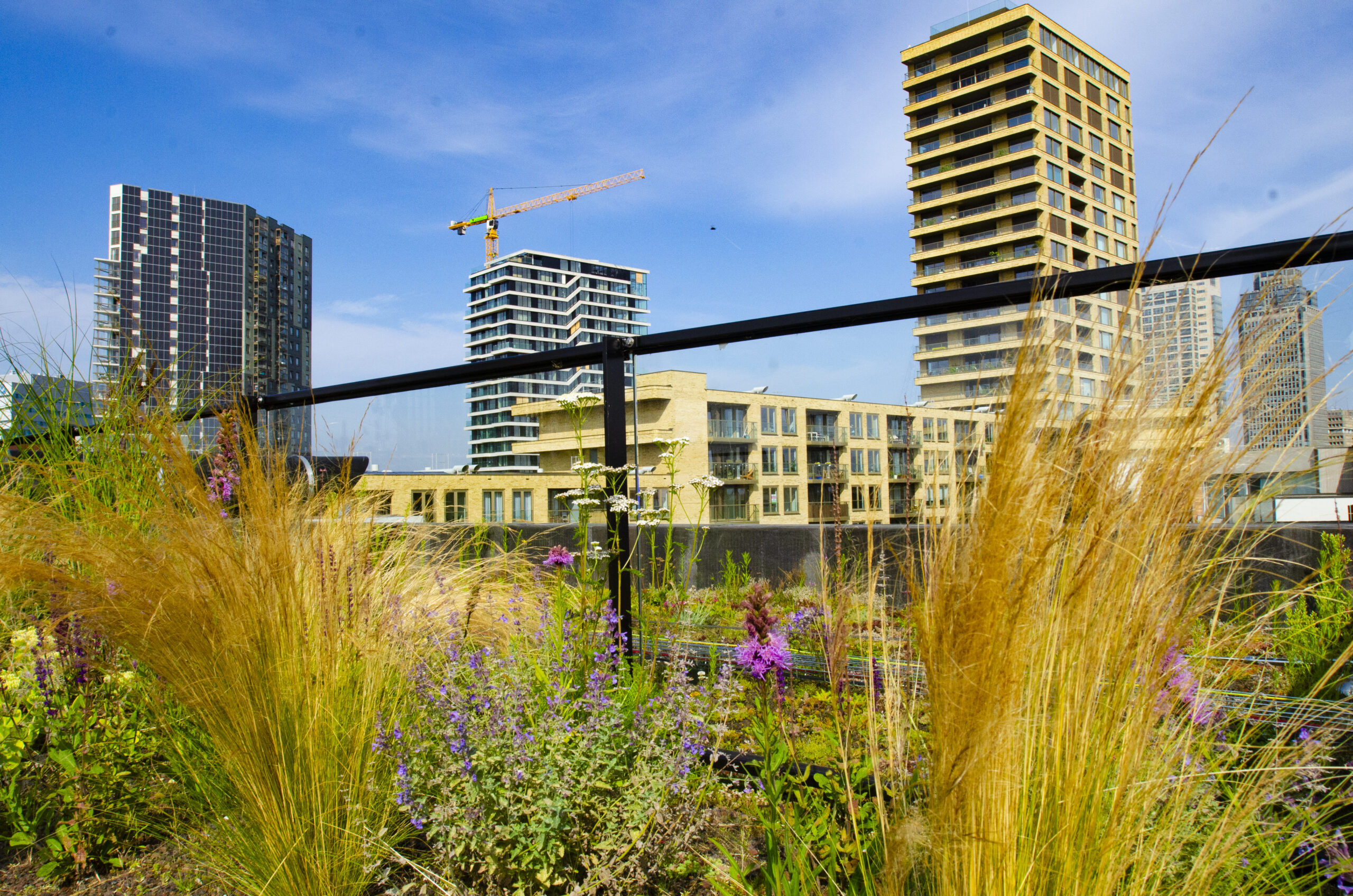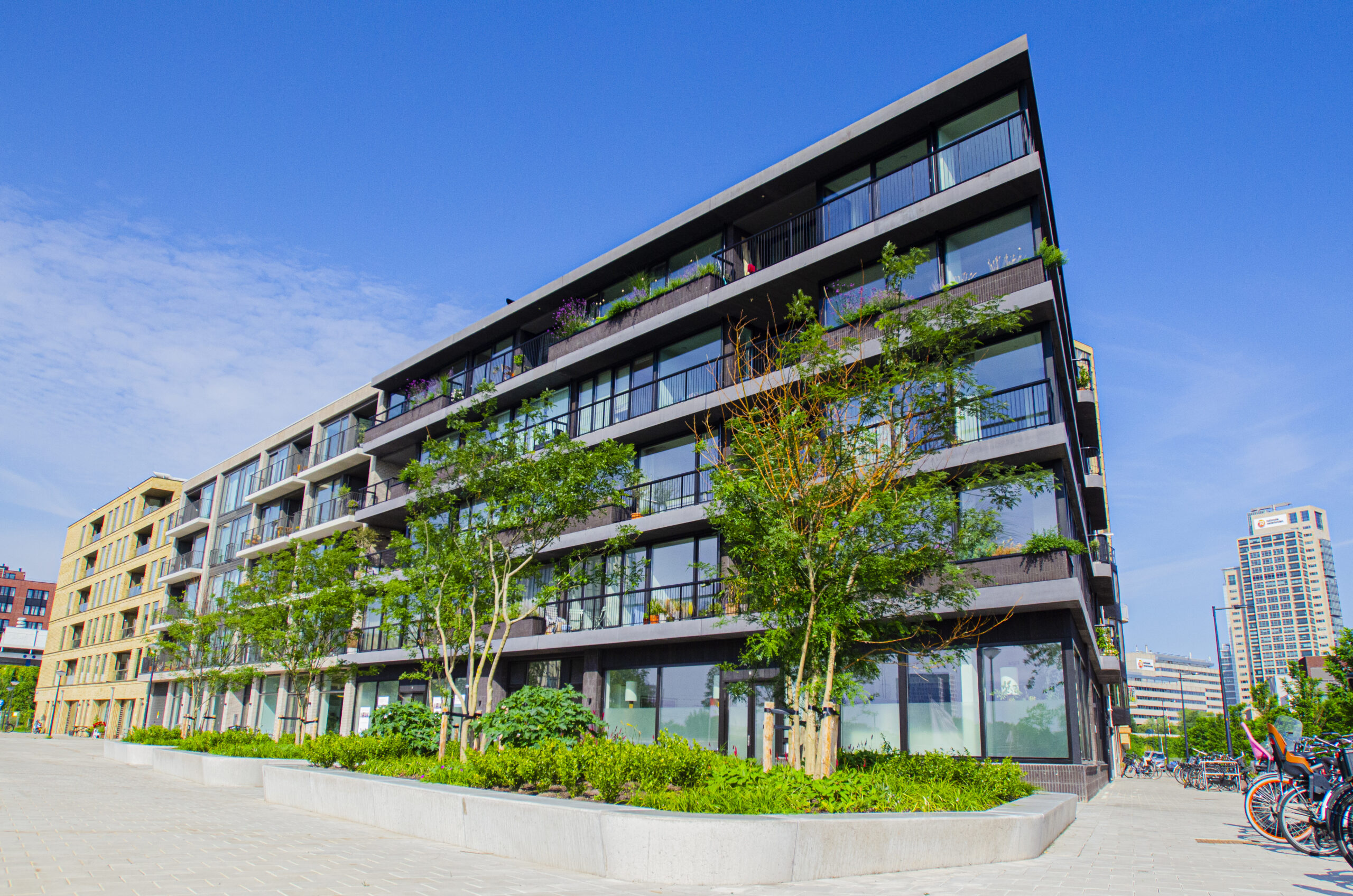In 2017, Tom Kuster (34) and his partner applied with a group for a building plot in the Bajeskwartier in Amsterdam East through a CPC: collective private commissioning. This is a form of private self-construction in which a group of future residents are organized as a non-profit legal entity. They are the client for the self-construction of more than one new house where they themselves will live. This form allowed Tom to work with a group of like-minded people to build homes that they could completely customize and build sustainably. In 2020, a complex with 32 apartments was completed. The icing on the cake was a blue-green roof of 900 m2. Made possible in part by the grant from the RESILIO project.
How do you get from a barren plain to a sublime, sustainable apartment complex with a huge blue-green RESILIO roof? To find out, we visit Tom on a sun-drenched summer morning in August on his roof right next to where the Bijlmerbajes once stood.
Sustainable living dream
Tom is an account manager at Signify – a Dutch multinational lighting corporation – and his work also involves sustainability. Nevertheless, Toms idea to build his own house was not only sustainability-driven: “The plan to start a self-build project was initially price driven. The prices for existing buildings have been skyrocketing for years and if you want to renovate in a sustainable way, its financially almost impossible to achieve. The fact that with self-construction we could build our own home entirely according to our own ideas on sustainability, that we could get a subsidy, and that we could do this with a competent and enterprising group, made us decide to go for it.”
“The plan to start a self-build project was initially price driven. The fact that with self-construction we could build our own home entirely according to our own ideas on sustainability, with a subsidy and an enterprising group, made us decide to go for it.”
Challenging process
Together with a number of other self-builders, Tom was part of the core group of the private initiative. Tom: “What did strike me is that self-building doesn’t necessarily mean you can think of everything yourself, especially when you’re building such a large complex with 32 homes. That can be a pitfall. There are shafts, bearing walls, noise standards and 1000 other architectural and technical things you have to take into account. So we did have to temper our expectations at times!” What the entire group did continually steer toward is that sustainability should be a priority in design and construction at all times.
“We use the water storage on the roof to water the flower boxes along the facades, this is digitally controlled.”
From grey water to tinted glass
The homes therefore have quite a few sustainable features. The entire complex is gasless and is heated and cooled with heat pumps. Another ingenious detail: a heat recovery system that uses grey water from the shower to heat the incoming cold-water line of that same shower, so you end up using less hot water. In addition, each house makes use of the solar panels on the roof, tinted glass, and, for example, a larger boiler could be chosen. The group also very deliberately chose a blue-green RESILIO roof. This roof has terraces as well that provide space for recreation, especially for the residents of the upper floors. The flourishing, water-storing roof further cranks up the number of sustainable features. “We use the water storage on the roof to water the flower boxes along the facades, this is digitally controlled.” indicates Tom. “The nice thing is that this water storage also has a cooling effect on the building in the summer.”
“The rooftop garden is located next to the skyscrapers of the Amstel Quarter and the Bajes Quarter. It is a secret garden far above the city. But it is alive: everything grows and hums.”
The crowning glory: a biodiverse, blue-green RESILIO roof
The smart blue-green RESILIO roof of Tom and his fellow residents is a fantastic garden where you get a very good idea of what the roofs of the future might look like. The rooftop garden is located next to the skyscrapers of the Amstel Quarter and the Bajes Quarter, which is still under construction at the moment in time. In the distance you can see the tall trees of the Diemerbos with IJburg laying behind those trees. It is a secret garden far above the city. But it is alive: everything grows and hums. The roof itself is divided into two sections: the rooftop garden with grasses, for instance various types of yarrow and ironwood, and the section with the extra heavy solar panels with sedum growing in between. This roof attracts many species of bees and bumblebees and is much more interesting to these animals than a ‘simple’ sedum roof. The two bumblebee species (Bombus Pascuorum and Bombus Lucorem) fly around happily. They feast on the nectar of the flowers. Such a roof is an important source of food for insects in the petrified city and acts as a link between various nature areas.
The rooftop garden on the Weespertrekvaart canal is really treated as a garden; the residents remove weeds and everything is neatly kept. This is where it differs from a so-called natural roof, where the weeds are not removed. The residents followed a special course on basic maintenance at roof gardening company the Roof Doctors. The sedum roof is maintained only sporadically. Yet that is a pity: the growth of clovers and other “weed plants” is important for various species of butterflies and other small insects. So you can also choose not to remove many of these so-called weeds. The more you leave standing, the happier the insects, and by the way, that goes for those planters on your balcony as well!
“We all built our own house in four years. As a result, I do not only have a very special bond with my house, but also with all my neighbours.”
Scoring on sustainable roofs
“The municipality’s ambition is to achieve a certain sustainability score for new construction projects,” explains Tom. “Because we chose a sustainable RESILIO roof and heavier solar panels, we achieved an even better score.” But it’s not just the roof that scores well on sustainability, the bond with his neighbours is also quite sustainable. “We all built our own house in four years. As a result, I do not only have a very special bond with my house, but also with all my neighbours. If I forgot to buy something, like tools, or if I need a hand, there is always a neighbour I can count on. Everyone is very social with each other. For example, we watched the European Football Championship on our roof. That was a huge success, for us then, not for the Dutch team.”

